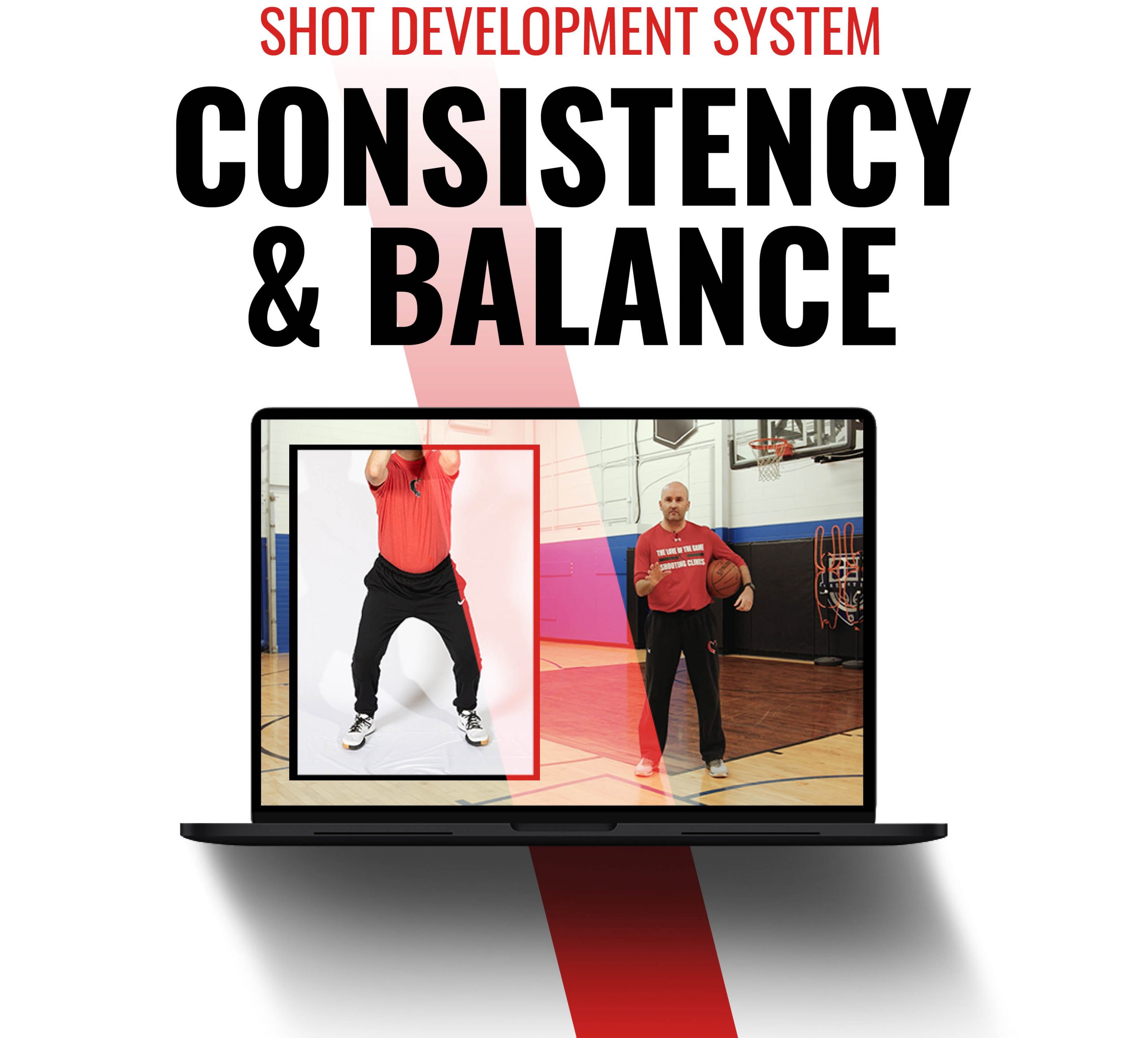In basketball, stance width is often discussed as a matter of preference or comfort. But in reality, the ideal positioning of a player’s feet can be rooted in principles of biomechanics and physics. This discussion often gets framed around subjective preferences like “feel” or anecdotal coaching advice, leading to variability in recommendations. However, when we quantify concepts like balance, force absorption, and stability margins, it becomes evident that there is a scientific basis for why certain stance widths are more effective than others.
Why Stance Width Matters
The position of a player’s feet determines their base of support, which is the area between and slightly around the feet where the player is able to control their body weight. The larger this base, the more resistant a player is to external forces trying to push them off balance. But while a wider base offers increased stability, it comes at the expense of mobility. The challenge, then, is to find a stance width that maximizes stability without sacrificing the ability to move quickly.
This balance between stability and mobility can be explained by measuring a few key components of a player’s body positioning and movement. In our analysis, we examined three primary factors: the width of the feet relative to the hips, the center of mass (COM), and the lateral force a player can absorb or generate. By understanding how these components interact, we can identify the “sweet spot” stance that allows a player to maintain control in high-speed game situations.
Key Components of Stability and Balance
- Center of Mass (COM):
The center of mass is a theoretical point where the entirety of a player’s mass is concentrated. It typically falls around 55% of a player’s height (for an average athlete) and shifts based on body movement. In a balanced stance, the COM should stay within the base of support created by the player’s feet. When the COM moves outside of this base, the player is at risk of losing stability and tipping over.
Base of Support:
The base of support is defined by the horizontal distance between the feet. If we measure the distance between the inside edges of the feet, we get a precise width that can be compared to the player’s hip width. Research and biomechanical analysis suggest that stances ranging from 1.0x to 1.5x hip width provide a good compromise between maintaining balance and allowing quick changes in direction. Wider than 1.5x hip width leads to increased stability, but at the cost of mobility and agility.Force Absorption and Control:
One way to understand stance effectiveness is to measure the lateral forces a player can handle before losing balance. These forces are influenced by the distance between the feet (moment arm) and the player’s COM height. When a player lands or stops into a wider stance, they need to reduce their lateral speed more significantly to avoid their COM moving too far outside the base of support. This is why players sometimes struggle to control their bodies when moving quickly into a wide stance.
Real-World Example: The Narrow Base of a 7-Foot Player
To better illustrate this concept, let’s look at an example using a 7-foot tall player. Taller players face unique challenges in maintaining balance, especially if they adopt a narrow stance (defined as less than 1.0x hip width, such as 0.5x hip width). For a 7-foot player, a 0.5x hip width stance would result in a very small base of support.
- Hip Width Measurement: For a 7-foot tall player, assuming a hip width that’s around 15% of their height, their hip width would be about 12.6 inches. So, a 0.5x hip width stance would have a base of support only 6.3 inches wide.
- Center of Mass (COM): The COM for this player would be approximately 46 inches above the ground. With such a high COM and narrow base, the stability margin (the horizontal distance the COM can move before leaving the base of support) would be extremely small.
- Impact of Minor Movements: Let’s say this player is attempting to shoot with their feet at 0.5x hip width and starts to lean their head slightly to one side—just a 2-3 inch shift. This small lean would result in the COM moving enough to potentially leave the narrow base of support, causing the player to lose balance. Similarly, a slight torso turn or a minor foot rotation would be sufficient to destabilize the player.
In essence, a 7-foot tall player with a narrow stance has a stability window of just 2-3 inches in any direction. This means that even minor adjustments can throw them off balance. Therefore, the narrow stance severely limits the player’s ability to remain stable, and they would need to slow down significantly before attempting to land or move into this stance to stay in control.
Visualizing the Impact of Stance Width
To better understand this relationship, let’s consider three typical stance widths: a narrow stance (0.5x hip width), an optimal stance (1.0 to 1.5x hip width), and a wider stance (1.5x to 2.0x hip width).
Narrow Stance (0.5x Hip Width):
In a narrow stance, the player’s COM is very close to the edges of the base of support, making it difficult to maintain balance against even small forces. While the narrow stance offers high mobility and quickness, it compromises balance significantly. A small push or a quick lateral movement can cause the player to tip over because the support base is too narrow to keep the COM centered.Optimal Stance (1.0 to 1.5x Hip Width):
This stance range provides the best of both worlds. The COM is comfortably positioned within the base of support, providing a stable platform to absorb lateral forces. This stance also allows the player to quickly transition into different movements—be it a defensive slide, a shot attempt, or a change in direction—without losing balance. Because of this, it is the most effective stance for the dynamic demands of basketball.Wider Stance (1.5x to 2.0x Hip Width):
A wider stance increases the base of support, making it harder to tip over. However, entering this stance while moving at high speeds can be problematic. The player needs to decelerate significantly before adopting this position, as the COM has to cover a larger horizontal distance to stay centered. Consequently, a wider stance is excellent for absorbing contact or stabilizing after a jump but is less effective when quick movement and agility are required.
Why Just Saying “Wider is Better” is Misleading
Coaches and players often assume that wider stances are universally more stable, and in a static position, this is true. However, basketball is rarely played from a static position. Players are constantly moving, jumping, and adjusting. Therefore, we need to factor in the dynamic stability—the ability to control and redirect momentum when entering or exiting a stance. This is why players who try to plant their feet too wide while moving quickly often feel out of control. They can’t decelerate efficiently enough to prevent their COM from shifting too far outside the base of support.
Practical Implications: Moving Toward an Optimal Stance
The data from our analysis indicates that players should work to land and stop in stances that are between 1.0 and 1.5x hip width. This allows them to maintain control of their body during fast-paced movements while still providing enough stability to absorb contact or quickly adjust. When teaching foot positioning, the goal should be to guide athletes toward this range, emphasizing dynamic stability over static balance.
Final Thoughts: Making Science Work for Skill Development
Understanding the biomechanics behind stance width isn’t just an exercise in theory. It has practical implications for skill development and injury prevention. When we look at balance and stability through the lens of physics and biomechanics, it becomes clear that recommending stance widths isn’t a matter of subjective opinion or stylistic preference. It’s grounded in the physics of how the body absorbs and controls forces. By incorporating these insights, coaches can make evidence-based decisions on how to teach stance positioning, helping players achieve greater stability and control on the court.
Through this approach, we can create training environments that are informed by science, providing players with the tools to move more effectively and maintain balance under high-pressure situations. And while every player may have unique preferences, understanding the science behind those preferences will lead to smarter coaching and better performance outcomes.
If you’re interested in diving deeper into the science behind stability and biomechanics in basketball, stay tuned for more insights as we continue to quantify what makes players not just good but great.




